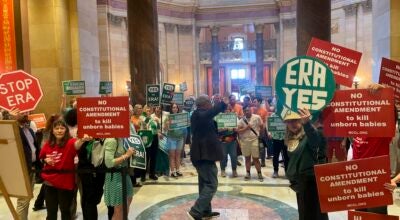Minnesota schools announce return to in-person learning
Published 8:00 pm Friday, December 18, 2020
|
Getting your Trinity Audio player ready...
|
Minnesota’s two largest school districts have already announced plans to welcome their youngest learners back to the classroom early next year, and other districts are scrambling to finalize their return-to-in-person plans.
St. Paul Public Schools has been in almost full distance learning mode since Gov. Tim Walz ordered schools to close their buildings in March.
Now, the district is planning to allow all pre-kindergarten through second-grade students to return to full-time in-person learning starting Monday, Feb. 1. Two weeks later, district schools will also open their doors to third, fourth and fifth grade students for full-time in-person learning.
“It is not going to be without work. We’re going to need to communicate and work once again in new and different ways,” Joe Gothard, the district’s superintendent, said in a video announcement posted on the district’s website.
New guidelines announced by Walz on Wednesday would conditionally allow in-person learning to start in elementary schools across the state as soon as Jan. 18, but Gothard said his district is waiting until February to allow staff a full winter break and time in January to prepare for the transition away from distance learning. He also expressed hope that the extra time would ensure COVID-19 case rates would continue to fall.
“It also gives us a couple more weeks to hopefully experience this downward trend that we’re on right now and that obviously all of us hope continues,” Gothard said.
Families will still have the option of enrolling their children in full-time virtual learning for the rest of the school year.
Minnesota’s largest district, Anoka-Hennepin, plans to start in-person instruction for K-2 students on Jan. 19.
Spokesperson Jim Skelly said his district and many other administrators started planning to reopen school buildings for their youngest learners back in November, when the district switched to distance learning.
“When the state and the governor announced their plan, the district was ready to commit,” Skelly said.
The St. Louis Park school district has also announced its intention to get students back into the classroom early next year. In an announcement, the district said it would recommend to the school board that K-2 students return to full-time in-person learning on Jan. 19. Third through fifth grade students would follow on Feb. 1.
Robbinsdale Public Schools has announced tentative dates for resuming in-person learning. Jan. 19 is when they hope to welcome pre-K through second grade students to the classroom, followed by third through fifth grade students on Feb 1.
Other districts have not yet announced their plans for January, including Minnesota’s third-largest district.
An announcement from Minneapolis Public Schools on Wednesday indicated the district would spend several days “getting additional information and guidance from the State” before deciding on what their return to in-person learning might look like.
Mounds View Public Schools told families it needed time to fully understand the new requirements and “navigate logistical issues like staffing and transportation” before making a decision. Administrators plan to poll families next week on whether they prefer in-person or distance learning and then make a decision on options by Jan. 8.
South Washington County Schools told families it would announce plans for all grade levels before or during winter break.
“School districts do not receive advance notice of these announcements,” the district wrote in an email. “We know that many families and staff wish we could share a definitive date for return, but we need more time to review and prepare for these new requirements.”
Many districts have already been planning for a possible return to in-person classes in late January. Scott Croonquist, executive director of the Association of Metropolitan School Districts, said many of his members have shifted to distance learning as COVID-19 cases rose in the state, and were consulting with public health officials about when they might reopen their doors.
“That was a date that a lot of our districts had already put out there as a goal for hoping to return to for in-person instruction,” Croonquist said. “It did make sense … coming out of winter break, that will allow that two-week break time frame, which is the incubation period for the virus. So people will have a good handle on things by the 18th (of January). I think it will align nicely with what a lot of our districts were already thinking.”
The shift in state guidance for Minnesota schools is a significant change in how elementary schools make decisions about re-opening for in-person learning.
“Essentially this guidance de-links the county-level data from decisions about elementary students,” said Anoka-Hennepin’s Skelly. “Parents used to watch the county-level data like the weather, looking for the daily update. Now that won’t be needed anymore. It will be how will schools be making decisions similar to the seasonal flu on closing or leaving classrooms, maybe asked to quarantine. Or it might be a school instead of the entire district.”
The shift away from county-level data only applies to elementary students and schools at the moment. But Skelly thinks there may be guidance for secondary students coming in January.
For Anoka-Hennepin and other districts, innovating their school delivery models, implementing new health and safety requirements and communicating changes to families and staff remain a steep challenge.
According to Skelly, some in the community have expressed frustration with the changing guidance and constant churn in learning scenarios.
On Friday, Skelly said the district sent out its 27th update to families since August, but it’s still not fast or frequent enough for those seeking instant information.
“Families want things to happen quickly,” he said. “People in school districts — educators — are not public health experts, and they have to rely on the expertise of the public health leaders in order to provide that guidance on what works. And that’s been changing.”





